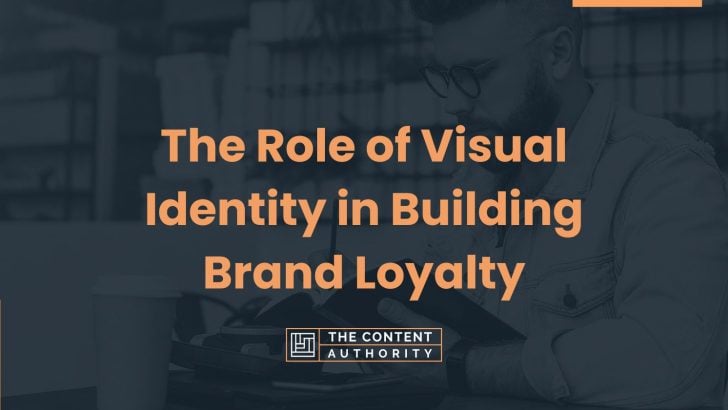Every successful brand has a powerful visual identity at its core, serving as a silent ambassador to the public. This identity is crafted through a thoughtful combination of logos, color schemes, typography, and other design elements that communicate a brand’s ethos and values at a glance. Establishing a strong visual identity is crucial because it helps a brand differentiate itself in a crowded market and fosters a sense of familiarity among consumers.
Visual identity does more than just make a brand visually appealing; it is a critical tool for building customer trust and loyalty. By presenting a consistent and cohesive look across all platforms, a brand can reinforce its message and connect more effectively with its audience. This connection is not just about aesthetics; it’s about creating a lasting impression that encourages customers to return.
In this article, we’ll examine the key aspects of visual identity and discuss how they contribute to the development of brand loyalty. We’ll explore the importance of education in design, the impact of consistency, the power of emotional connections, and the value of staying relevant through cultural insights and customer feedback. Understanding these elements can help brands craft visual identities that resonate deeply with consumers and stand the test of time.
- Educational Roots
Professionals with a BFA in graphic design and communication design are specially equipped to create compelling visual identities. Their education covers a range of subjects, from color theory and typography to branding and user experience, providing them with a holistic understanding of how visual elements can influence perception and behavior. These designers learn to craft visual identities that not only look appealing but also communicate the brand’s values effectively, making them pivotal in the strategic branding efforts that underpin brand loyalty.
- Consistency is Key
Consistency across all touchpoints of a brand’s visual identity is fundamental to reinforcing brand recognition. When a brand consistently uses the same visual elements in its advertisements, packaging, and online presence, it creates a cohesive image that is easy for customers to recognize. This recognition helps build a sense of familiarity and trust, which are essential components of brand loyalty. For instance, when a customer sees the same color scheme and logo layout across different platforms, it reassures them of the brand’s reliability and professionalism, encouraging continued patronage.

- Emotional Connections Through Design
Visual identity does more than just make a brand look good; it builds an emotional bridge to the consumer. Effective design can evoke a range of emotions, from safety and trust to excitement and curiosity. Brands like Apple and Nike have mastered this, using sleek, innovative designs to evoke feelings of cutting-edge technology and peak performance, respectively. These emotional connections make the brand more memorable and encourage a deeper level of loyalty as customers start to associate these feelings not just with the products but with the brand itself.
- Differentiation Through Unique Design Elements
In a crowded market, a unique visual identity can make a brand stand out. By incorporating distinctive design elements that align with the brand’s unique selling propositions, companies can highlight their differences and attract specific target audiences. This uniqueness is not just about being different; it’s about being visible in a way that attracts and retains customer attention. When a brand’s visual identity reflects its unique character, it not only captures attention but also fosters a stronger connection with its audience, which is essential for building and maintaining loyalty.
- Cultural Relevance in Visual Identity
Aligning a brand’s visual identity with cultural values and trends can significantly enhance how consumers relate to the brand. When a brand’s visuals reflect the cultural context of its audience, it shows understanding and respect for their values, which can strengthen emotional bonds and loyalty. For example, using colors, symbols, or typography that resonate with a particular culture can make a brand more appealing and relatable to that demographic. This relevance is especially important in a globalized market, where understanding diverse cultural preferences can make or break a brand’s success in new territories.
- The Role of Color Psychology
Color psychology plays a pivotal role in shaping consumer perceptions and behaviors. Different colors can invoke different feelings—red can evoke excitement and urgency, while blue might convey trust and calmness. Brands like McDonald’s and Facebook have used color to their advantage, with McDonald’s red-and-yellow color scheme stimulating appetite and drawing attention and Facebook’s blue color evoking a sense of security and trust. By carefully selecting colors that align with their brand values and the emotions they wish to evoke, companies can reinforce their brand identity and foster a deeper connection with their audience.
- Typography and Brand Personality
The choice of typography in a brand’s visual identity can communicate much about its personality. A brand like Lego uses a bold, rounded typeface to convey its fun and approachable nature, while luxury brands such as Tiffany & Co. use elegant, serif fonts to portray sophistication and exclusivity. The right typography enhances the brand’s message and helps solidify its character in the minds of consumers. When customers see typography that aligns with the brand’s personality, it reinforces their expectations and trust in the brand, contributing to greater loyalty.
- Feedback Loops: Listening to Audience Responses
Successful brands stay dynamic; they evolve based on consumer feedback to keep their visual identity relevant and engaging. This involves creating channels for feedback and actively incorporating insights into design updates. For instance, when a new logo or design element receives mixed reviews, brands that quickly address feedback and make necessary adjustments can turn potential setbacks into demonstrations of responsiveness and customer care. This not only improves the visual identity but also builds trust and loyalty by showing that the brand values customer input and is committed to meeting their expectations.
Conclusion
The role of visual identity in building brand loyalty cannot be overstated. From the deep-rooted skills developed through specialized education, like a BFA in graphic design, to the strategic application of design principles such as consistency, emotional connection, and cultural relevance, every aspect of visual identity plays a crucial role in how a brand is perceived and embraced by consumers. Moreover, the thoughtful use of color psychology and typography adds layers of meaning and personality to a brand, making it more memorable and appealing.

